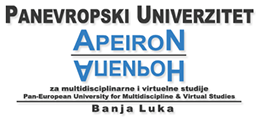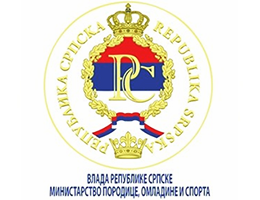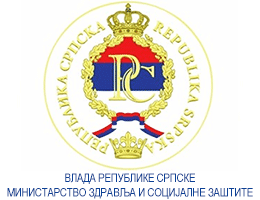Factor Structure of Motor Abilities in Judo Athletes
Volume 15, Issue 1 (2025)
Volume 15, Issue 1 (2025)
Factor Structure of Motor Abilities in Judo Athletes
Abstract:
Regular judo practice over a long period of time affects the optimal development of athletes, improves the
structure of their psychosomatic status, and affects their morphological characteristics and motor skills. This research
was conducted on a purposive sample of respondents with the primary aim of determining the factor structure of the motor
abilities of judokas, using a cross-sectional model. The sample consisted of members of the wider male judo national
team of Serbia, specifically 25 cadet and junior competitors between the ages of 15 and 21, who were in final preparations
for the European Championships in Lithuania and EYOF in Hungary. The weight categories included in the study ranged
from 50 to 100 kilograms. A total of 9 variables were used to assess the motor abilities of judokas, namely: three variables
for assessing repetitive strength (push-ups, bench press and trunk hyperextension), three variables for evaluating explosive
strength (vertical jump with arm swing, vertical jump after a drop in depth and bench press) and three variables for
evaluating isometric strength (arm dynamometry, isometric back strength and isometric leg strength). By applying factor
analysis, orthogonal and Varimax solutions and the Guttman-Kaiser criterion, the structure of the examined motor abilities
space was determined, which resulted in the extraction of two dominant factors: a mechanism for regulating the intensity
of excitation and a mechanism for regulating the duration of excitation.
Keywords:
judo national team, cadet and junior competitors, factor structure, motor abilities.
Full Text:
References:
Brаtić, M. (2003). Džudo. Niš: Fаkultet fizičke kulture u Nišu. [in Serbian]
Drid, P., Trivić, T., & Tabakov, S. (2012). Special judo fitness test-a review. Serbian Journal of Sports Sciences, 6(4).
Drid, P., Franchini, E., Lopes-Silva, J. P., Fukuda, D. H., Wells, A. J., Lakicevic, N., ... & Trivic, T. (2021). Health implications of judo training.
Sustainability, 13(20), 11403.
Костовски, Ж. & Мицкоски, Г. (2017) ЏУДО – Методика, Авторско издание, Некст принт дигитал доо Скопје, [JUDO – Methodology,
Author’s Edition, Next Print Digital Ltd. Skopje]. [in Macedonian]
Kostrzewa, M., Laskowski, R., Wilk, M., Błach, W., Ignatjeva, A., & Nitychoruk, M. (2020). Significant predictors of sports performance in
elite men judo athletes based on multidimensional regression models. International Journal of Environmental Research and Public
Health, 17(21), 8192, https://doi.org/10.3390/ijerph17218192
Kuvačić, G., Krstulović, S., & Đapić Caput, P. (2017). Factors determining success in youth judokas. Journal of Human Kinetics, 56(1),
Lech, G., Pałka, T., Sterkowicz, S., Tyka, A., & Krawczyk, R. (2010). Effect of physical capacity on the course of fight and level of sports
performance in cadet judokas. ARCHIVES OF BUDO | SCIENCE OF MARTIAL ARTS
Lolić, D., & Nurkić, M. (2011). Razlike u motoričkim sposobnostima kod džudista različitog uzrasta. Sports science and health, 2(2). [in
Serbian]
Lulzim. I (2011).: Razlike u morfološkim karakteristikama, motoričkim i funkcionalnim sposobnostima, kod dječaka džudista i nesportista.
Sportske nauke i zdravlje 1(2):164-169 [in Serbian]
Milošević, N., Atanasković, A., & Lolić, D. (2012). Specijalni džudo fitnes test kao pokazatelj razlika u anaerobnom kapacitetu džudista
različitog uzrasta. SPORTS SCIENCE AND HEALTH, 4(2). [in Serbian]
Mikić, B. & Redžić, H. (1995). Džudo. Tuzla . PrintCom. [in Serbian]
Nurkić, M., Bratić, M., Mitić, D., & Kafentarakis, I. (2017). The differences in the motor area of cadet and junior age judokas. Facta Universitatis,
series: Physical Education and Sport, 15(1), 083-092.
Protić-Gava, B., Drid, P., & Krkeljaš, Ž. (2019). Effects of judo participation on anthropometric characteristics, motor abilities, and posture in
young judo athletes. Human Movement, 20(3), 10–15, https://doi.org/10.5114/hm.2019.83992
Sterkowicz, S., Lech, G., Pałka, T., Tyka, A., Sterkowicz-Przybycień, K. L., Szyguła, Z., & Kłys, A. (2011). Body build and body composition
vs. Physical capacity in young judo contestants compared to untrained subjects. Biology of Sport, 28(4).
Zekrin, A., Smolevskaya, E., & Prokhorova, M. (2024). Factor structure of physical and functional preparation of judokas at the stages of longterm
sports training. Science and Sport, 12(2), 33–41. https://doi.org/10.5281/zenodo.11159212






